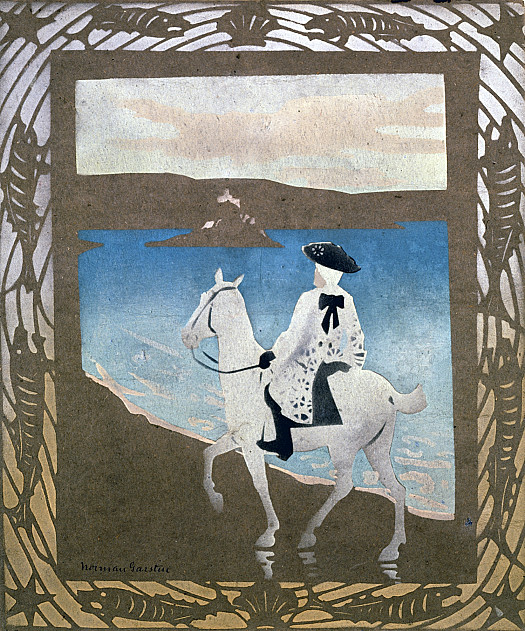Norman Garstin, RBC NEAC (1847-1926)
Norman Garstin was born in Caherconlish, County Limerick, Ireland on 28 August 1847. Early in life his father committed suicide and his mother developed a severe form of muscular paralysis; as a result, he was brought up by his grandparents. His grandfather did not welcome his desire to paint, and encouraged him either to enter the church, as he had done, or the army, as had Norman's father. Eventually, he attended Cork Engineering College, and then worked in an architect's office in London, but his progress in this direction was hampered by his lack of aptitude for mathematics. So, prompted by a meeting with an old friend, he departed for South Africa to make his fortune in the diamond fields of Kimberley.
Instead, he became a journalist as co-founder, sub-editor and leader writer of the Cape Times.
Garstin returned to Ireland in the late 1870s, and entered a period in which he painted in the summer and hunted in the winter. Despite losing an eye, he decided to study art formally; so he attended Charles Verlat's Academy in Antwerp alongside Frank Bramley and Fred Hall (circa 1880); and under Carolus-Duran in Paris (in the early 1880s). During this period, he developed an admiration for Degas and undertook a number of painting trips across France, and into Italy (1884), Spain and Morocco (1885). The results included a number of fresh scenes of exteriors and interiors.
Garstin returned to England in 1886 and, soon after his marriage, settled in Cornwall, living first in Newlyn and then in Penance. He became central to the innovative group of plein-air painters working in the area, many of whom, like him, were members of the New English Art Club. He was described by the Newlyn School's leader, Stanhope Forbes, as their 'intellectual mentor... as well as a much-loved figure'. Though he exhibited widely, his masterpiece, The Rain it Raineth Every Day, failed to be shown at the Royal Academy Summer Exhibition in 1889 through lack of space. Increasingly in need of money, he turned from landscapes to costume genre and scenes of upper-class life. He also wrote, lectured, and led a regular Summer Painting School to northern France. Most notable among his pupils were Harold Harvey and his own daughter, Alethea Garstin. In addition to a number of solo shows, he held an exhibition of watercolours with Alethea at Walker's Gallery in 1924. While never conventionally an illustrator, Garstin demonstrated a great flair for design not only in his painting but through his interest in stencil-cutting. He died in Penzance on 22 June 1926.
His work is represented in the collections of the Tate Gallery, the Victora and Albert Museum, and Penlee House and Gallery (Penzance).
Further reading: Norman and Alethea Garstin, St Ives: Penwith Gallery, 1978


